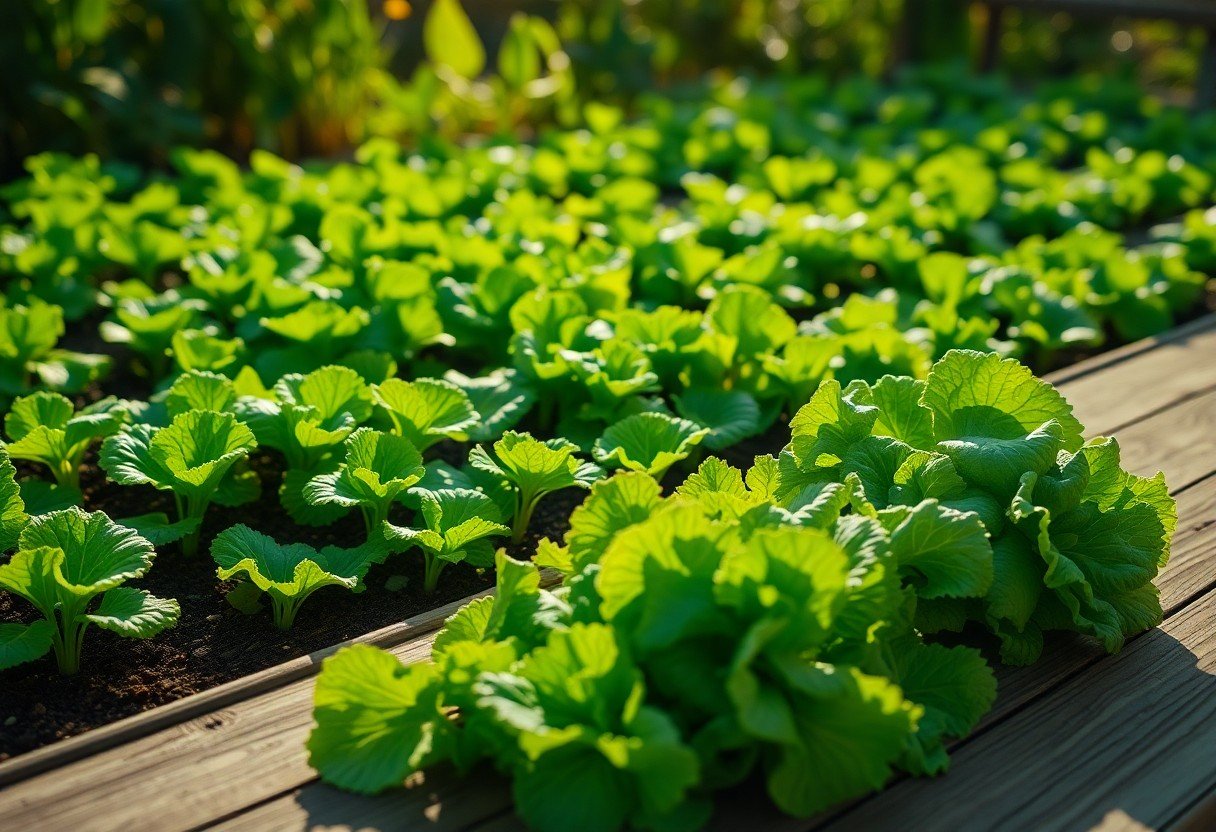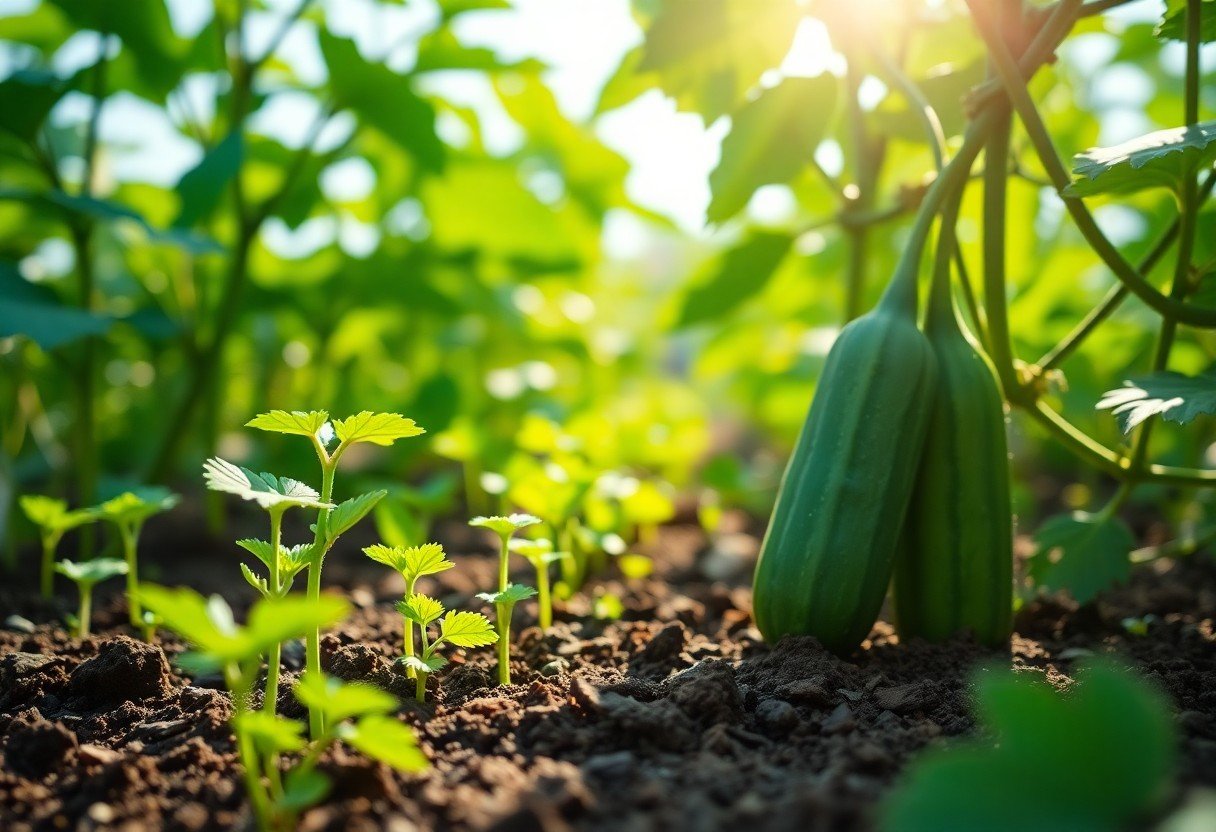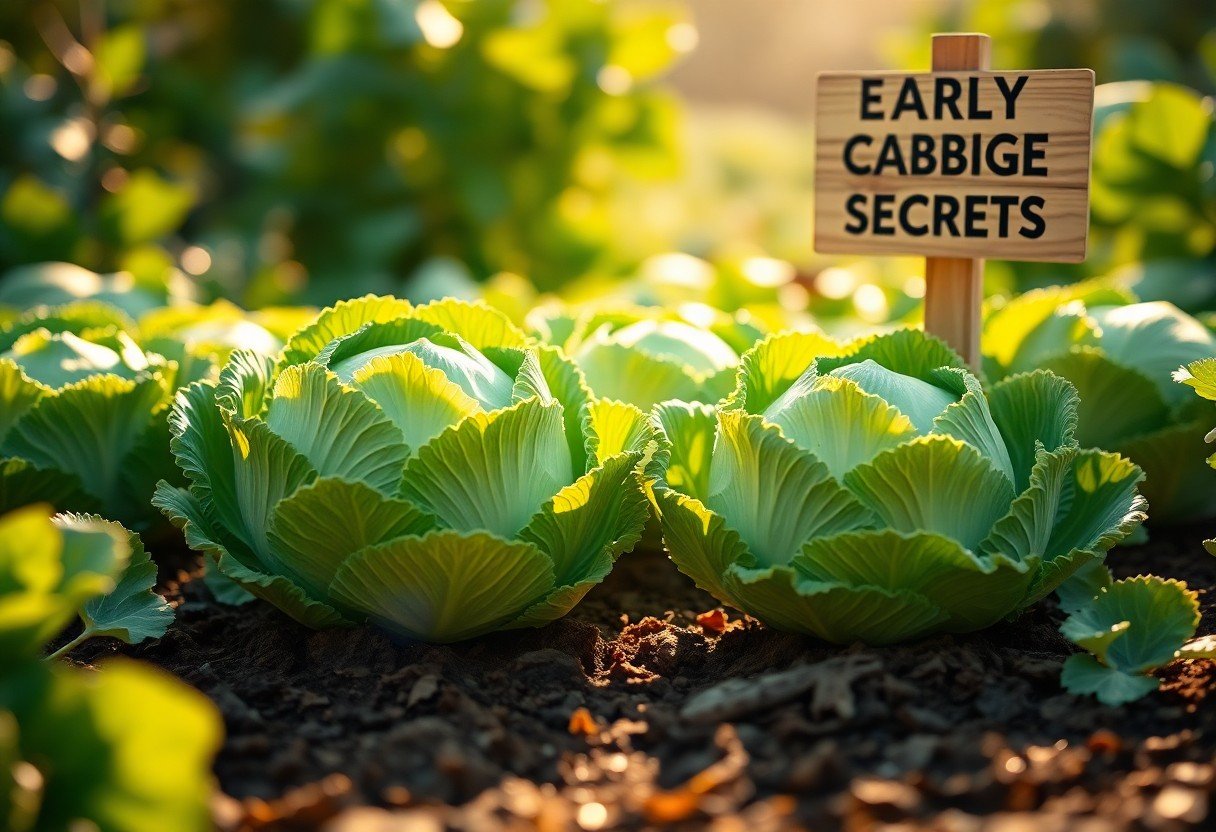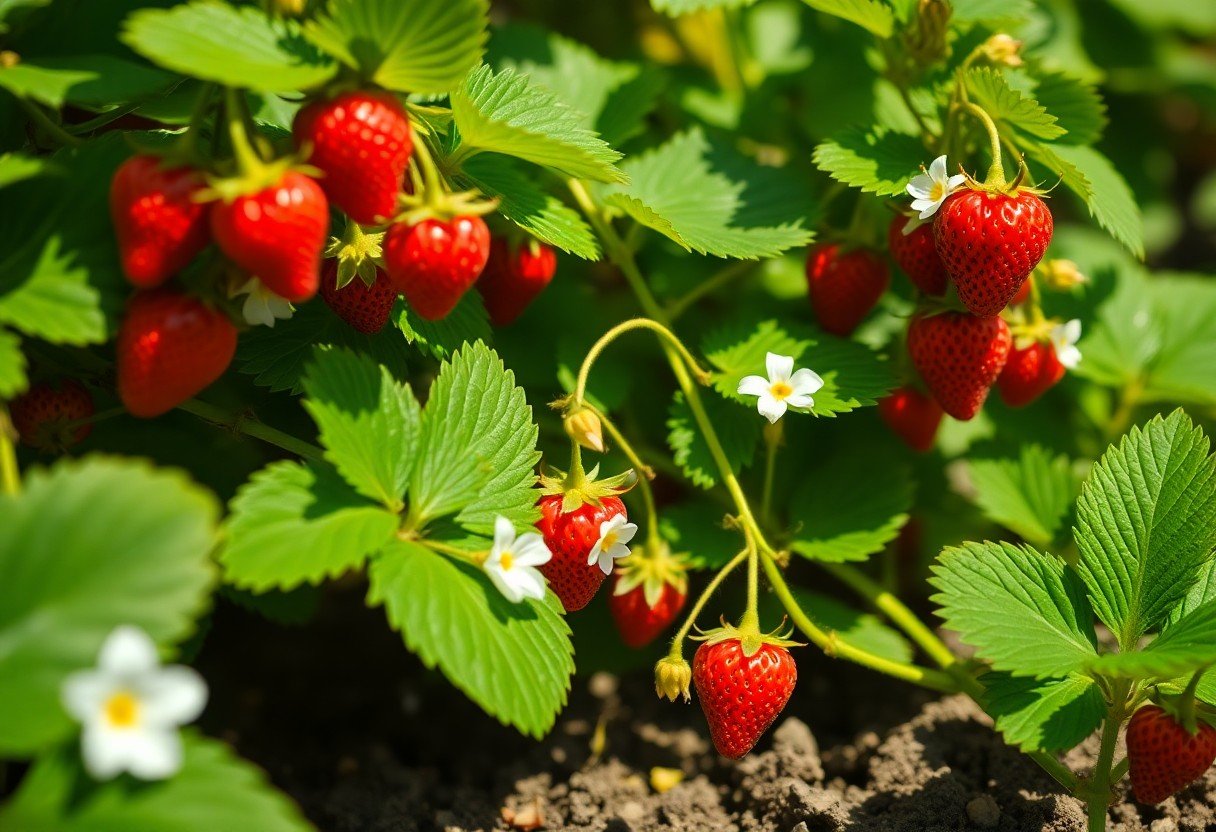Most gardeners dream of plucking fresh, juicy strawberries from their own backyard. To achieve this sweet success, you’ll need to understand the entire journey—from selecting the right seedlings and nurturing them properly to ensuring a bountiful harvest. In this guide, you’ll discover imperative tips and techniques for growing strawberries that will thrive in your garden, equipping you to enjoy the delicious rewards of your efforts. Get ready to examine the world of strawberry cultivation and turn your gardening dreams into reality!
Key Takeaways:
- Choose the right strawberry variety suited to your climate and soil conditions for optimal growth and fruit production.
- Ensure proper soil preparation by enriching it with organic matter to promote healthy root development.
- Implement effective watering techniques, such as drip irrigation, to maintain consistent soil moisture without overwatering.
- Regularly monitor for pests and diseases to take timely action and protect the health of your strawberry plants.
- Practice crop rotation and companion planting to enhance soil fertility and reduce disease risk for future harvests.
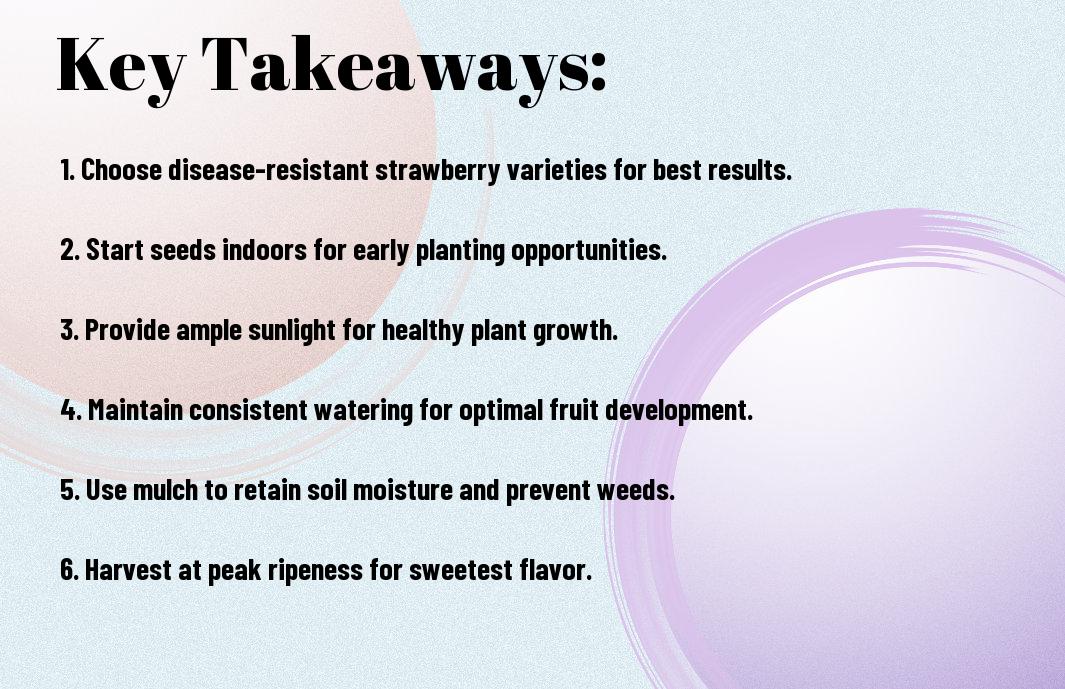
Understanding Strawberry Varieties
To grow the sweetest strawberries, it’s necessary to understand the different varieties available. Each variety boasts unique flavors, sizes, and textures, making them suitable for different climates and uses. Choosing the right type can impact your harvest quality and success rate significantly.
Overview of Strawberry Types
Strawberry varieties can be grouped into several categories based on growth habits and fruiting seasons:
| Type | Description |
| June-bearing | Producing a single large harvest in late spring to early summer. |
| Ever-bearing | Yielding strawberries in the spring, summer, and fall. |
| Day-neutral | Fruit production regardless of day length, offering consistent yields. |
| Hybrid | A mix of characteristics from traditional varieties. |
| Wild | Small, intensely flavored fruits, often found in nature. |
Any variety can be a delightful addition to your garden depending on your specific needs and conditions.
Choosing the Right Variety for Your Climate
Before selecting strawberry varieties, evaluate your specific climate conditions, as strawberries thrive in a variety of climates but perform best when suited to their growing environment.
Strawberry varieties are sensitive to temperature, light, and soil conditions. For instance, June-bearing types excel in regions with a winter chill, while day-neutral varieties might flourish in warmer climates. Knowing your USDA hardiness zone will guide you in making the best choice for a prolific harvest, ensuring the plants acclimate well and yield fruit at optimal levels.
Assessing Use Cases: Fresh Eating vs. Preserves
Understanding your intended use for strawberries is vital. Some varieties are best for fresh eating, while others excel in cooking and preserves.
Your choice between fresh eating or preserves will influence which strawberry variety you select. If you enjoy munching on juicy berries straight from the garden, look for sweet varieties like ‘Chandler.’ Conversely, if you plan to make jams or compotes, robust varieties like ‘Cavendish’ with firmer skins may be more suitable. Tailoring your selection to how you intend to use the fruit maximizes your gardening success.
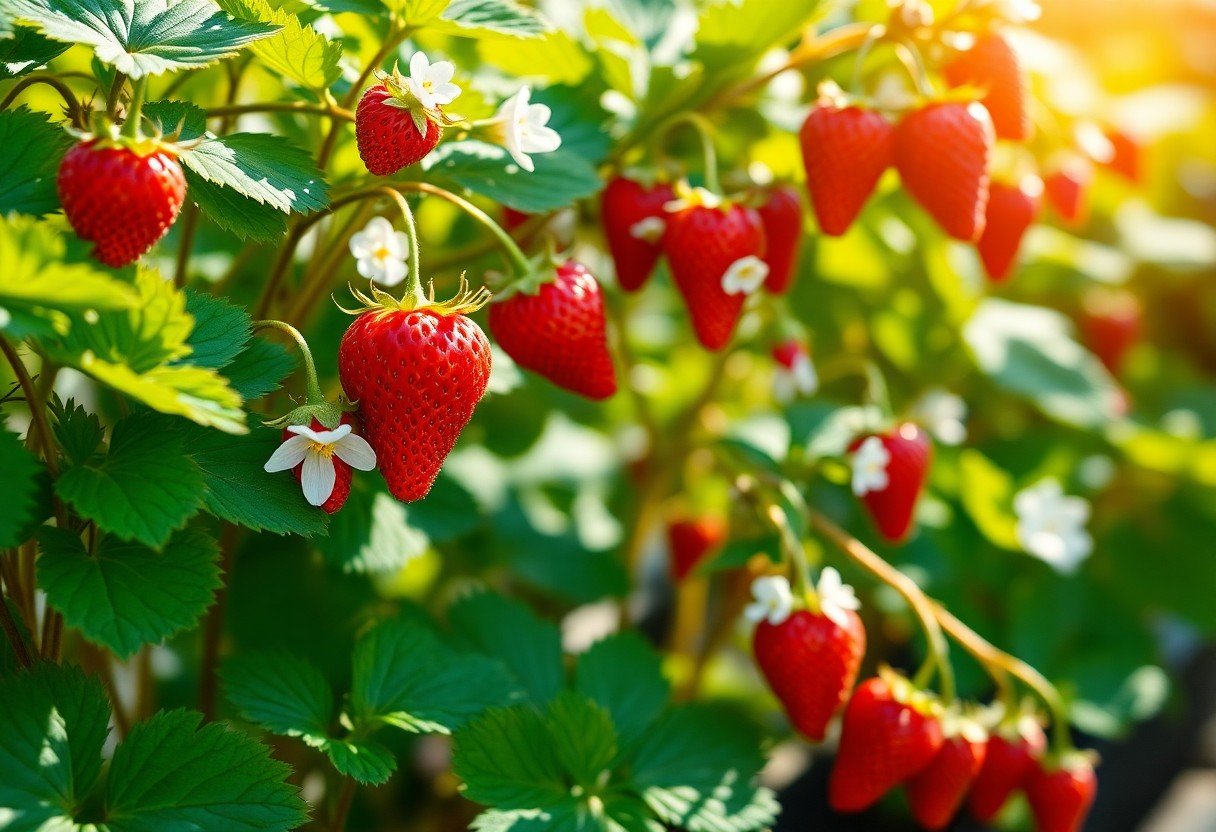
Soil Preparation and Site Selection
Some of the most important steps to ensuring a bountiful strawberry harvest involve proper soil preparation and selecting the right site. By taking the time to create an optimal growing environment, you can set your strawberries up for success. Focus on enriching your soil and ensuring that they receive adequate sunlight and airflow for robust growth.
Ideal Soil Conditions for Strawberry Growth
Below the surface, strawberries thrive in soil that is well-drained and rich in organic matter. Aim for a pH level between 5.5 and 6.5, as this range promotes nutrient availability. Mix in compost or aged manure to enhance soil fertility, ensuring your plants have the nutrients they need to flourish.
Choosing the Best Location: Sunlight and Airflow
Below the canopy of trees or near artificial structures, your strawberries will suffer unless you position them optimally. They require at least six to eight hours of sunlight daily for photosynthesis and fruit production. Additionally, adequate airflow will reduce the risk of disease and enhance plant health.
With proper placement, you’ll maximize your strawberries’ exposure to sunlight and airflow. Selecting a sunny spot allows for effective photosynthesis, which is crucial for berry sweetness. Consider planting your strawberries in the most open area of your garden to avoid shade from other plants and structures, ensuring they remain healthy and productive throughout the growing season.
Preparing the Garden Bed or Container
Above all, preparing the right garden bed or container is crucial for growing strawberries. Elevate your garden beds or use containers that allow for proper drainage. This setup prevents waterlogged roots and promotes healthy growth while also enabling easier access for care and harvesting.
Conditions for successful growth can be significantly improved by preparing your planting area correctly. Ensure that your garden bed is at least 12 inches deep and filled with a well-balanced soil mix. If using containers, opt for ones that hold enough volume for strong root development, and always ensure proper aeration and drainage to facilitate healthy strawberry plants.
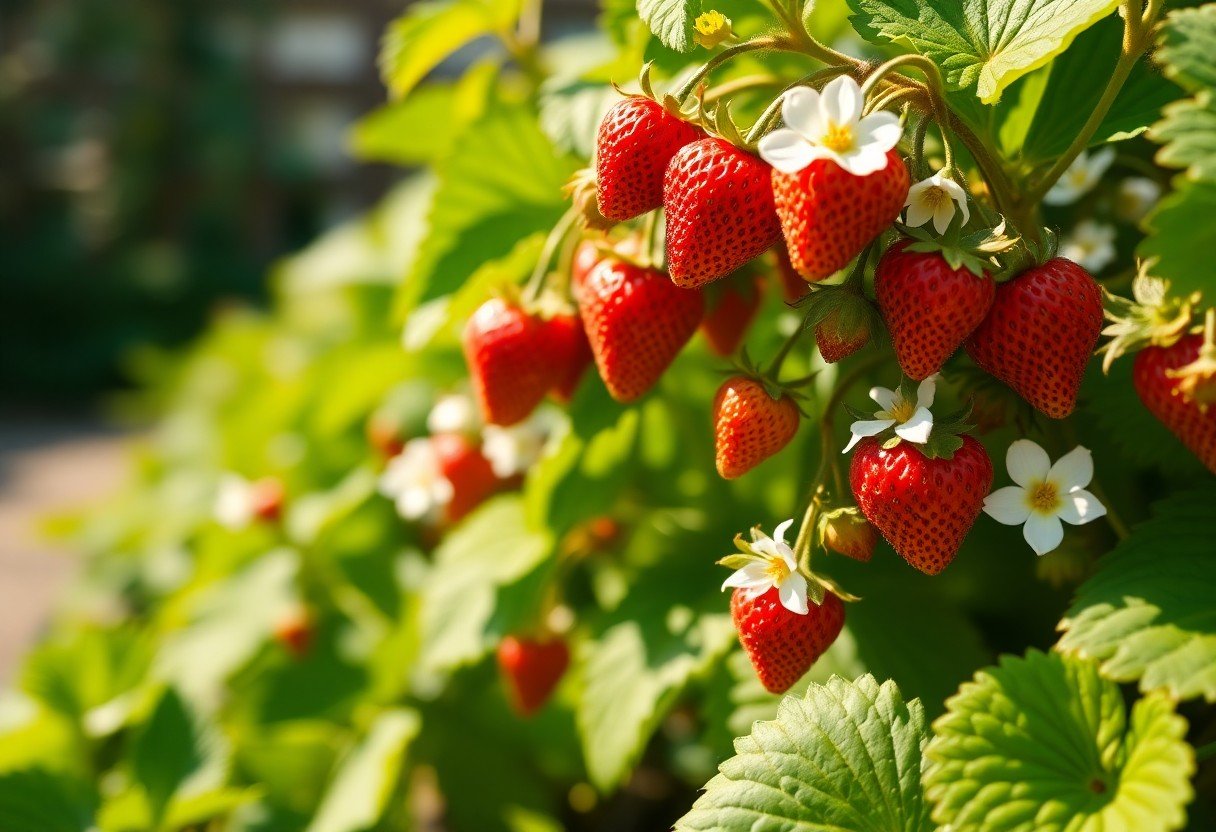
Planting Strawberry Plants
Unlike other fruits, strawberry plants thrive with proper attention to their planting conditions. Ideally, you should choose a sunny location that offers well-draining soil. Make sure to space your plants adequately, allowing for airflow and accessibility. Planting at the right depth and time can significantly affect your yield, ensuring that your strawberries develop into sweet, juicy fruits.
Selecting Between Seeds and Seedlings
Before you begin planting, decide whether you want to grow your strawberries from seeds or seedlings. Seeds are cost-effective and allow for a wider variety, but seedlings offer a quicker path to harvest. If you’re looking for immediate results, seedlings might be the better choice, whereas seeds are perfect for adventure and experimentation in your gardening.
Optimal Planting Times Throughout the Season
Beside considering your climate, the best time to plant strawberries is generally in early spring or late fall. These periods allow the plants to establish roots before facing the heat of summer or the chill of winter. Timely planting maximizes growth and fruiting, setting you up for a bountiful harvest.
In addition to seasonality, be mindful of regional variations. In warmer climates, you might plant in late fall for an early spring harvest, while cooler areas often benefit from spring planting. Monitor your local frost dates to avoid planting too early, ensuring your strawberries have ample time to develop strong roots before conditions become extreme.
Planting Techniques and Spacing Guidelines
To optimize growth, use well-drained soil and plant your strawberries in rows, ensuring adequate spacing of 12 to 18 inches apart. Maintain 3 to 4 feet between rows for ease of access and air circulation. Plant your strawberries at a depth where the crown is level with the soil surface to promote healthy growth.
Indeed, following proper planting techniques can significantly impact your strawberry yield. Using methods like raised beds or mounds not only encourages drainage but also helps maintain soil warmth. With consistent moisture, proper spacing, and the right depth, you create an ideal environment for your plants to flourish and ultimately produce delicious strawberries.
Essential Care for Strawberry Plants
Your strawberry plants need dedicated care to thrive and produce sweet, juicy fruit. Proper maintenance includes a balanced watering schedule, strategic fertilization, and effective mulching to support growth and reduce weeds. By focusing on these important aspects, you can ensure that your plants are healthy and yield an abundant harvest.
Watering: Techniques and Frequency
An appropriate watering regimen is vital for the health of your strawberry plants. Aim to provide consistent moisture, ensuring that the soil is evenly damp but not soggy. Water deeply once or twice a week, adjusting depending on the weather and soil conditions to promote strong root development and prevent stress during dry spells.
Fertilizing Your Strawberry Plants for Maximum Growth
Around the growing season, applying a balanced fertilizer can significantly enhance your strawberry plants’ growth and fruit production. Choose a fertilizer designed for fruiting plants and follow the recommended application rates for optimal results.
With proper fertilization, your strawberry plants will receive important nutrients such as nitrogen, phosphorus, and potassium, which contribute to vigorous growth and abundant fruiting. Start fertilizing in early spring and continue every four to six weeks throughout the growing season, adjusting as needed based on your soil test results for best performance.
Mulching to Improve Soil Health and Prevent Weeds
Improve your strawberry plants’ growing conditions by applying a layer of organic mulch around their base. This method helps retain moisture, regulate soil temperature, and suppress weed growth, allowing your strawberries to thrive without competing for resources.
Indeed, using mulch not only enhances soil health by adding important organic matter as it breaks down but also creates a protective barrier that minimizes weed seed germination. Organic options like straw, wood chips, or grass clippings can be beneficial, providing a nutrient-rich environment that supports robust strawberry growth while keeping unwanted plants at bay.
Pest Management Strategies
Not every pest is harmful to your strawberry plants, but being proactive in your pest management approach will ensure a bountiful harvest. Understanding how to identify, prevent, and control pests is crucial to maintaining the health of your strawberries and achieving sweet, juicy fruit.
Identifying Common Strawberry Pests
On the journey to a successful strawberry harvest, it’s important to recognize the common pests that may threaten your crop. Look out for aphids, spider mites, and tarnished plant bugs, which can sap the strength of your plants and impact fruit quality. Early identification will allow you to act swiftly to mitigate any damage.
Preventative Measures for Healthy Plants
Against pests, the best offense is a strong defense. Incorporating protective measures such as crop rotation, proper spacing, and mulching can create an environment less favorable to pests. Healthy plants are more resilient, so providing adequate sunlight and water will also go a long way in deterring pest infestations.
But implementing preventative measures is not just about keeping pests at bay; it’s also about fostering overall plant health. You should regularly inspect your plants for any signs of stress or damage, ensuring that they receive the right nutrients. This holistic approach will naturally suppress pest populations and promote robust strawberries bursting with flavor.
Organic and Chemical Control Options
Across your strawberry patch, you may need to consider both organic and chemical options for pest control as situations arise. Organic solutions like insecticidal soap or neem oil can effectively target pests without harming beneficial insects. However, synthetic pesticides can also be useful if applied judiciously, following all safety guidelines.
Pests can disrupt your harvest whether you choose organic or chemical control methods. It’s crucial to read labels carefully, follow application instructions, and consider the time frame involved for each treatment type. Choosing the right method can minimize harm to beneficial organisms while effectively managing pest populations in your strawberry garden.
Disease Prevention and Management
Once again, the health of your strawberry plants hinges on proactive measures against diseases. By implementing a thorough disease management plan, you can safeguard your plants and ensure they thrive. Regular monitoring for symptoms, maintaining good hygiene, and fostering healthy soil conditions will all contribute to a productive harvest, free from detrimental diseases. Your attention to detail will pay off as you enjoy a bountiful strawberry yield.
Common Strawberry Diseases and Their Symptoms
Above all, understanding the common diseases that affect strawberries is vital for successful cultivation. Fungal infections like powdery mildew can manifest as a white powdery coating on leaves, while gray mold appears as a fuzzy brown growth on ripe fruit. Additionally, root rot leads to wilting and yellowing leaves, signaling a serious underlying issue. Learning to identify these symptoms early will help you take action before diseases spread.
Effective Prevention Techniques
Management practices that prioritize soil health and environmental conditions can significantly reduce disease risks. By ensuring proper spacing and airflow between plants, you can minimize humidity levels that foster disease growth. Moreover, practicing crop rotation and using disease-resistant varieties will bolster the overall resilience of your strawberry beds. Regularly removing debris and weeds that harbor pathogens also plays a vital role in maintaining a healthy growing environment.
At the outset of your planting season, focus on enriching your soil with organic amendments and fostering beneficial microorganisms. By implementing crop rotation, you can disrupt the life cycles of pathogens that may linger in the soil. Additionally, choosing strawberry varieties that are resilient to common diseases will further enhance your chances of thriving plants, ensuring a fruitful harvest. Consistency in these practices is key to reducing disease incidents over time.
Treatment Options for Infected Plants
Symptoms of infection can present a dire situation for your plants, leaving you to assess the best course of action. If you notice any unusual growth or wilting, timely intervention is necessary. You can employ fungicides or organic treatments to tackle specific ailments. Always refer to the product instructions for safe application, and consider removing severely affected plants to protect the rest of your crop.
Hence, prompt action upon recognizing symptoms can significantly improve the outlook for your infected strawberry plants. You might find that applying targeted treatments, such as fungicides for fungal infections or insecticides for pests, can restore your plants’ vigor. Additionally, ensure you disinfect tools and equipment to prevent further spread of disease. By diligently treating and monitoring your plants, you pave the way for a healthier strawberry patch and a more abundant harvest.
Encouraging Fruit Production
Keep your strawberry plants thriving by providing them with the right nutrients, sunlight, and water. To boost fruit production, be mindful of factors such as soil quality and fertilization—this will promote healthy growth and abundant yields. Consider rotating your strawberry beds annually to maintain soil health and reduce disease risks, ensuring that you enjoy sweet, juicy strawberries season after season.
Pruning for Plant Health and Enhanced Yield
Below the surface, effective pruning is important for maintaining plant health and enhancing fruit yield. Regularly remove dead or yellowing leaves to encourage air circulation and light penetration. Also, trim away any weak or damaged runners to redirect the plant’s energy towards fruit production, resulting in healthier plants and more abundant harvests.
Managing Runners: Benefits and Techniques
Behind the scenes, managing runners is key to having a productive strawberry garden. These long stems can either be allowed to root and create new plants or be pruned to focus on fruit production. By controlling runners effectively, you can optimize your garden space, ensuring that your existing plants devote their energy towards producing sweet strawberries.
Yield is directly affected by how you manage runners in your strawberry patch. Allowing some runners to root can help you propagate new plants, increasing your overall yield in future growing seasons. However, if you notice that runners are detracting from fruit production, consider trimming them back or placing them in a designated spot. Striking a balance between propagation and fruit yield will lead to a more fruitful harvest.
Importance of Pollinators in Fruit Set
Importance of pollinators in your strawberry garden cannot be overstated. These beneficial insects, including bees and butterflies, play a vital role in the fruit-setting process. By attracting pollinators to your garden, you can significantly enhance fruit development and ensure that your strawberry plants yield sweet, juicy berries.
In addition to their direct contribution to pollination, attracting a variety of pollinators can foster a healthier ecosystem in your garden. Creating a welcoming environment for these creatures by planting flowers nearby and minimizing pesticide use will help boost pollination rates. A rich diversity of pollinators ensures that your strawberry plants produce an abundance of high-quality fruit, making your harvest truly rewarding.
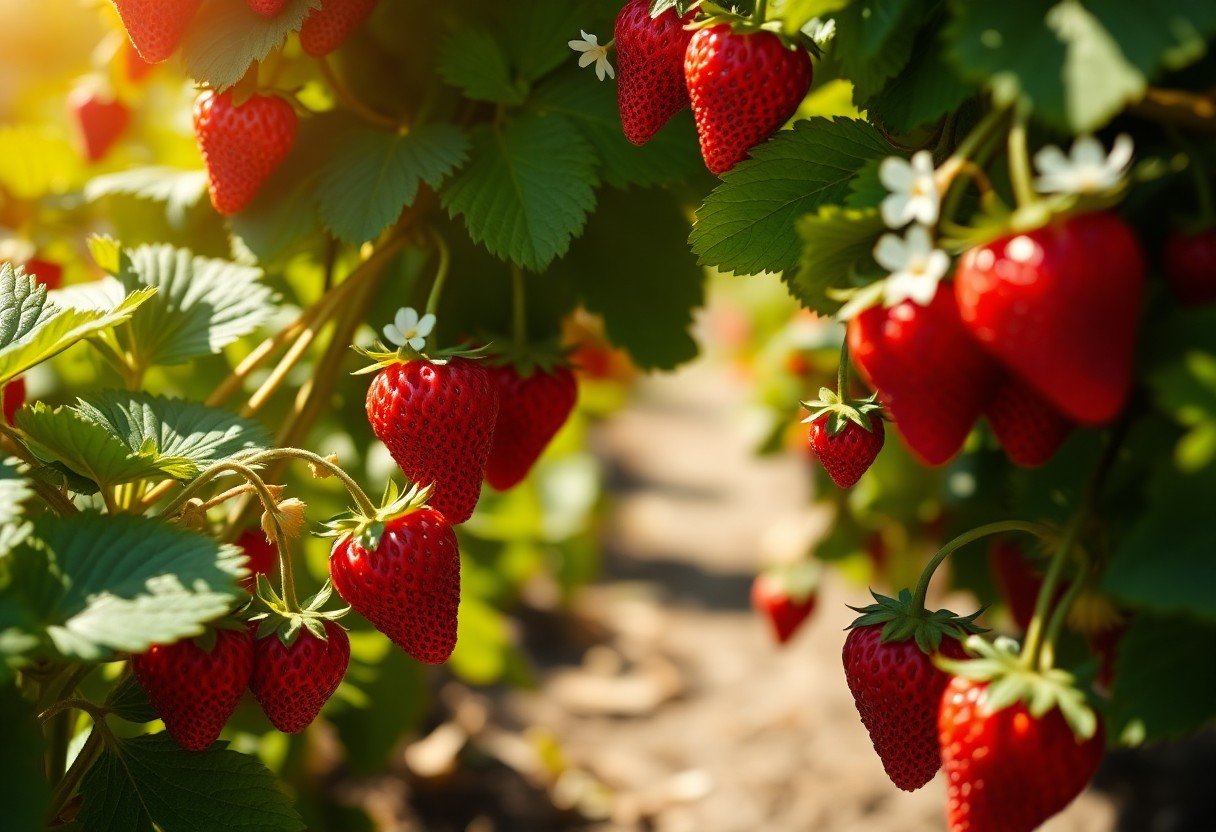
Timing Your Harvest
After nurturing your strawberry plants, it’s crucial to time your harvest correctly for the best flavor and sweetness. Strawberries should be picked when they are fully ripe, as this is when they develop their maximum flavor profile. Depending on the variety, your strawberries may ripen at different times, so keep a close eye on them as they approach maturity.
Signs Your Strawberries Are Ready for Picking
Behind the shiny red surface of your strawberries, look for other indicators that signal ripeness. They should have a vibrant color with no green or white parts remaining. Softness is another sign; gently press the berry to check for a slight give, indicating that it’s ripe and juicy. A sweet aroma also signifies that they are ready for harvesting.
Techniques for Gentle Harvesting
For a successful harvest, adopting gentle harvesting techniques is vital to preserve both the strawberries and the plants. Grasp the berry gently and twist it to detach it from the stem, avoiding any bruising. Use scissors or pruning shears to cut the stem if the berry is too delicate to pull by hand, ensuring you leave a small part of the stem attached.
Even minor injuries to your strawberries can lead to spoilage, so it’s important to handle them with care. When harvesting, wear gloves to protect your hands, and place the berries in a shallow container to prevent crushing. Always avoid overpacking your harvest basket; allowing air circulation will help keep the strawberries fresh longer after picking.
Frequency of Harvesting for Continuous Yield
Picking your strawberries consistently encourages ongoing production. You should check your plants every few days, as strawberries can ripen quickly, and frequent harvesting keeps plants producing fruit throughout the growing season.
Another benefit of regular picking is that it stimulates the plants to produce more flowers and fruit. By removing ripe strawberries, you promote the growth of additional berries, maximizing your yield. Make a habit of checking your plants often and pick any ripe strawberries you find to enjoy fresh strawberries all season long.
Post-Harvest Handling
Many factors influence the quality and flavor of your strawberries once they have been harvested. Proper post-harvest handling is necessary to maximize the freshness and enjoyment of your berries. Techniques such as careful washing, sorting, and understanding the right temperature for storage can all have a significant impact on the final product you present to your family and friends.
Enhancing the Shelf Life of Fresh Strawberries
By following specific storage methods, you can enhance the shelf life of your fresh strawberries. Keeping them in a cool environment, away from direct sunlight, and ensuring they are dry before storage can significantly prolong their freshness. Utilizing breathable containers can help maintain optimal humidity levels while allowing them to breathe, minimizing the risk of mold development.
Best Practices for Storing Strawberries
For optimal storage, you want to keep your strawberries in a shallow container to prevent bruising. Always refrigerate your strawberries promptly after harvesting or purchasing, ensuring they remain unwashed to prevent moisture accumulation. This will prolong their shelf life, helping to preserve that sweet taste you worked so hard to achieve.
Fresh strawberries are best stored in a single layer, ideally in a paper towel-lined container, to absorb any excess moisture. Always inspect your berries and remove any damaged or overripe ones, as they can spoil the rest. Avoid covering them tightly, as proper airflow is necessary for maintaining their texture and flavor.
Planning for Future Crops Post-Harvest
After you’ve enjoyed your delicious harvest, it’s time to think ahead. Assessing your post-harvest process allows you to identify what worked well and what could be improved for your next crop cycle. This will enhance your overall yield and quality in future seasons.
To ensure your future crops are even more successful, analyze the data from your current harvest. Consider the varieties you planted, their growth conditions, and the post-harvest practices you implemented. By making strategic adjustments, such as optimizing your time for planting and enhancing storage methods, you can significantly increase both yield and sweetness for seasons to come.
Seasonal Maintenance
Despite the challenges that changing seasons bring, effective seasonal maintenance is key to ensuring a bountiful strawberry harvest. Each time of year calls for specific care routines that help your plants thrive, from protecting them in winter to preparing them for the vigorous growth of spring and the demanding heat of summer. This guide will help you navigate the important care needed to keep your strawberry plants healthy and productive all year round.
Winterizing Your Strawberry Plants
Winterizing your strawberry plants is important to protect them from harsh temperatures and frost. Begin by mulching around the base of the plants with straw or leaves to insulate the roots. You can also cover the plants with fabric or row covers when extreme cold is expected, ensuring your seedlings remain dormant but unharmed until spring arrives.
Early Spring Preparation Activities
Along with the first signs of warmer weather, it’s time to prepare your strawberry garden for a productive season ahead. Early spring activities include removing any winter mulch, inspecting plants for damage, and applying fresh compost to nourish the soil. Replacing any dead or weak seedlings can help to strengthen your crop as growth ramps up.
Activities such as pruning dead leaves and runners will promote airflow and strength in your strawberry plants. Ensure that you also check for pests as you tidy up your garden. Providing adequate water as the temperatures start to rise is key to encouraging robust growth. By focusing on these early spring tasks, you set the foundation for healthy strawberries throughout the upcoming growing season.
Summer Care Routines
Activities during the summer months revolve around consistent watering, mulching, and monitoring for pests. It is important to maintain soil moisture and keep weeds at bay to ensure your strawberry plants can concentrate on producing fruit rather than battling for nutrients.
To keep your strawberries thriving through the heat, aim to water them regularly, especially if there hasn’t been significant rainfall. Mulching around the plants will help regulate soil temperature and retain moisture. Additionally, watch for signs of pests or diseases, as the summer heat can create ideal conditions for their development. By following these care routines, your plants will be primed for fruitful harvests.
Maximizing Your Strawberry Yield
Not only can you enhance the harvest of your strawberry plants, but implementing key strategies will ensure bountiful crops year after year. Focus on proper care, pest management, and choosing the right varieties to increase productivity. With the right techniques, you can enjoy an abundant strawberry yield that delights your taste buds.
Advanced Growing Techniques
Across the gardening landscape, there are several advanced techniques you can apply to elevate your strawberry cultivation. These methods ensure hearty plants and optimal fruit production.
Techniques to Maximize Yield
Companion Planting for Healthier Strawberries
Below are some companion plants that enhance the growth of your strawberries and deter pests. These allies in the garden support your strawberries by improving soil health and attracting beneficial insects.
Healthier strawberries thrive when planted alongside certain companion plants like basil, borage, and chives, which can deter pests and encourage pollination. These plants provide a natural habitat for beneficial insects, which contribute to a healthier ecosystem around your strawberry patch.
Utilizing Vertical Gardening Methods
Attract your strawberries to new heights with vertical gardening methods. By taking advantage of vertical spaces, you can increase your planting area while minimizing ground disease risk and maximizing sun exposure.
In addition to saving space, vertical gardening allows for better air circulation and easier harvest. This method also makes use of creative containers, wall planters, or trellises to support your strawberry plants, ensuring that you enjoy a fresh and plentiful strawberry season.
Common Mistakes to Avoid
For successful strawberry cultivation, it’s important to sidestep common pitfalls that can hinder your plants’ health and productivity. By being aware of these mistakes, you can ensure your strawberries grow robustly from seedlings to a bountiful harvest.
Overwatering and Underwatering Issues
Beside the importance of soil type, striking the right balance in watering is vital for strawberry plants. Overwatering can lead to root rot while underwatering can trigger stress in your plants, affecting their growth and fruit production.
Planting Too Close Together
The spacing between your strawberry plants can significantly impact their development. If you plant them too closely, you risk competition for nutrients, water, and sunlight, which can lead to weakened plants and reduced harvest.
With proper spacing, you allow each strawberry plant sufficient room to grow and thrive. Generally, leaving 18 to 24 inches between each plant facilitates good air circulation and access to sunlight, enhancing their overall health and productivity. This spacing is also important for preventing disease spread among your plants, resulting in a more fruitful harvest.
Ignoring Pest and Disease Signs
The health of your strawberry plants can quickly decline if you overlook early signs of pests and diseases. Vigilance in inspection can prevent small issues from escalating into larger, more damaging problems that threaten your crop.
In addition, addressing pest and disease symptoms promptly can save you time and resources in the long run. Regularly check the leaves, stems, and fruits for unusual spots, discoloration, or insect activity. By identifying and tackling these issues early, you can protect your plants and ensure a vibrant, healthy strawberry garden.
FAQs About Strawberry Gardening
Now that you’re on your journey to growing strawberries, you’ll likely have a few questions. This section addresses common queries about strawberry gardening, from planting techniques to pest control, helping you navigate your way to a bountiful harvest. Understanding the basics enhances your gardening experience and cultivates sweet success in your strawberry patch.
Answers to Common Strawberry Growing Questions
Behind every successful gardener are answers to the most frequently asked questions. You may wonder about ideal planting times, soil types, and how to best care for your strawberry plants. This section will provide you with the important information needed to nurture your strawberries from seedlings to juicy, delicious fruits.
Troubleshooting Common Problems
To maintain a healthy strawberry garden, you must tackle common challenges that can arise. Factors like pests, diseases, and environmental conditions can affect your plants’ growth and fruit production. Knowing how to identify and address these issues will ensure you can enjoy a successful harvest.
About common problems, some strawberries may experience pests such as aphids or spider mites, while diseases like powdery mildew might hinder their growth. You should inspect your plants regularly to detect any signs of distress. Early intervention is key; neem oil or insecticidal soap can effectively manage pests, and proper air circulation helps prevent fungal growth. Moreover, selecting disease-resistant varieties can make a significant difference in your strawberry gardening success.
Resources for Further Learning
After you’ve prepared your garden, exploring additional resources can ensure your strawberry-growing endeavors are successful. Books, online courses, and gardening forums can provide valuable insights and tips from experts and fellow enthusiasts alike. Investing time in further education can empower you to tackle any challenges that arise.
Considering the vast array of resources available, you can find specialized books on strawberry cultivation, gardening apps, and online platforms where experienced gardeners share their knowledge. Engaging with local gardening clubs can also connect you with seasoned growers who can offer personalized advice. The more informed you are, the better your chances for a thriving strawberry garden.
Final Words
Taking this into account, your journey from nurturing seedlings to enjoying a bountiful harvest of strawberries requires dedication, care, and knowledge of best practices. By choosing the right varieties, providing optimal growing conditions, and embracing proper maintenance techniques, you can ensure your strawberry plants yield sweet, juicy fruits. Your efforts will not only enrich your gardening experience but also provide delicious rewards for you and your family. With persistence and passion, success in growing strawberries is within your reach.
